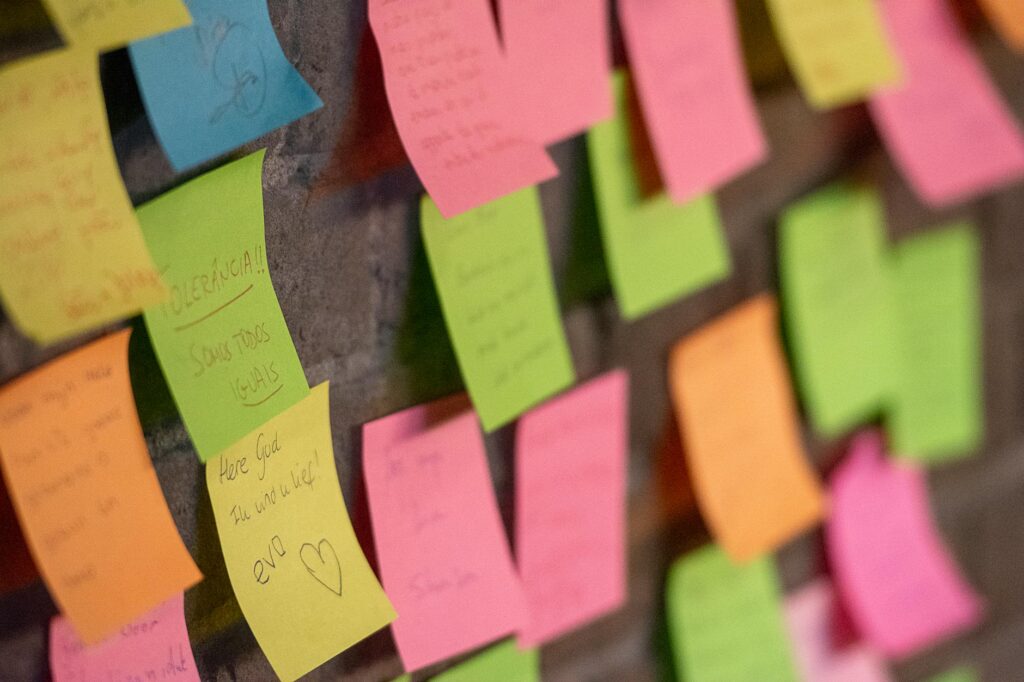What is visual productivity boards?

What is visual productivity boards?
In today’s fast-paced work environments, staying organized can feel like trying to catch smoke with your bare hands. That’s where visual productivity boards step in, acting as your reliable allies in enhancing focus and clarity. These boards not only help you visualize your tasks and goals but also allow you to manage your time effectively. But what exactly are visual productivity boards and how can they transform the way you work?
Understanding Visual Productivity Boards
Visual productivity boards are tools designed to streamline your workflow by visually displaying tasks, goals, and progress. Think of them as a roadmap for your work life, guiding you through your daily responsibilities while keeping your focus sharp. They enable you to break down your projects into manageable parts, making it easier to see what needs to be done at a glance.
These boards can take various forms—ranging from digital platforms to physical boards on your wall. The key is that they provide a visual representation of your tasks, which can lead to improved productivity and reduced stress. Whether you’re managing a personal project or collaborating with a team, visual productivity boards can enhance the clarity of your objectives.

Photo by Jan van der Wolf
Components of Visual Productivity Boards
To create an effective visual productivity board, you need to understand its essential components:
- Goals: What do you want to achieve? Clearly defined goals are the foundation of your board.
- Tasks: Break down your goals into actionable tasks. This step makes your objectives feel less overwhelming.
- Progress Tracking: Incorporate elements to monitor your progress, such as checklists or visual indicators.
- Visual Cues: Colors, images, and shapes can help differentiate tasks and make the board more engaging.
By combining these elements, you create a powerful tool that not only tracks your tasks but also motivates you to achieve them.
Types of Visual Productivity Boards
There’s no one-size-fits-all approach to visual productivity boards. They can be categorized into different formats:
- Digital Tools: Applications like Trello, Asana, and Notion allow you to create interactive boards that can be accessed from anywhere. These tools often come with features like reminders and collaboration options.
- Physical Boards: A traditional corkboard or whiteboard can be used to create a tactile experience. Sticky notes, magnets, and markers make it easy to add and remove tasks.
- Hybrid Approaches: Combine digital and physical elements to suit your personal style. For example, you might use a digital tool for task management while keeping a physical board for visual inspiration.
Benefits of Visual Productivity Boards
The advantages of using visual productivity boards extend beyond mere organization. Here’s how they can benefit you:
Improved Focus and Clarity
Visual productivity boards help clarify your priorities. When everything is laid out visually, you can quickly identify what needs your attention. This not only enhances your focus but also prevents you from feeling overwhelmed by a long list of tasks. A well-structured board acts like a beacon, guiding you toward your most pressing responsibilities.
Enhanced Collaboration and Communication
In a team setting, visual productivity boards foster collaboration. They provide a shared space for team members to stay aligned on goals and progress. When everyone can see the same visual cues, it simplifies communication and makes it easier to discuss project timelines and responsibilities. You can find more on how visual management increases efficiency at the workplace here.
How to Create an Effective Visual Productivity Board
Designing a visual productivity board doesn’t have to be complicated. Here are some practical steps to help you get started:
Choosing the Right Tools
Select tools and materials that suit your needs. If you prefer digital platforms, consider options like Trello or Asana. For physical boards, invest in a good quality corkboard and colorful sticky notes. Both digital and analog tools have their unique benefits, so choose what feels right for you.
Setting Up Your Board
When organizing your board, keep these strategies in mind:
- Start with Your Goals: Place your main goals at the top. This sets the tone for everything that follows.
- Organize Tasks Logically: Group similar tasks together. For instance, create separate sections for urgent tasks, long-term projects, and completed items.
- Use Visual Styles: Incorporate colors, symbols, and images to make your board visually appealing. This not only enhances engagement but also helps with quick recognition.
Real-Life Examples and Case Studies
Visual productivity boards have made a significant impact in various settings. Let’s explore some success stories:
Personal Success Stories
Many individuals have shared how visual productivity boards transformed their daily lives. For instance, a student might use a physical board with sticky notes to organize study materials for exams. This simple yet effective method can significantly reduce stress and improve study habits.
Corporate Implementations
Businesses are increasingly integrating visual productivity boards into their workflows. Companies that adopted visual management strategies reported enhanced team engagement and productivity. For example, a manufacturing firm might use a digital board to track production goals and address inefficiencies in real-time. This approach leads to quicker problem-solving and a more collaborative work culture. More insights on the benefits of visual management boards can be found here.
Conclusion
Visual productivity boards are more than just organizational tools; they are catalysts for increased productivity and clarity in our busy lives. By incorporating visual elements into your task management, you can improve focus, enhance teamwork, and streamline communication. Whether you opt for a digital solution or a traditional board, the key is to find a method that resonates with your style. Embrace visual productivity boards and watch your efficiency soar!